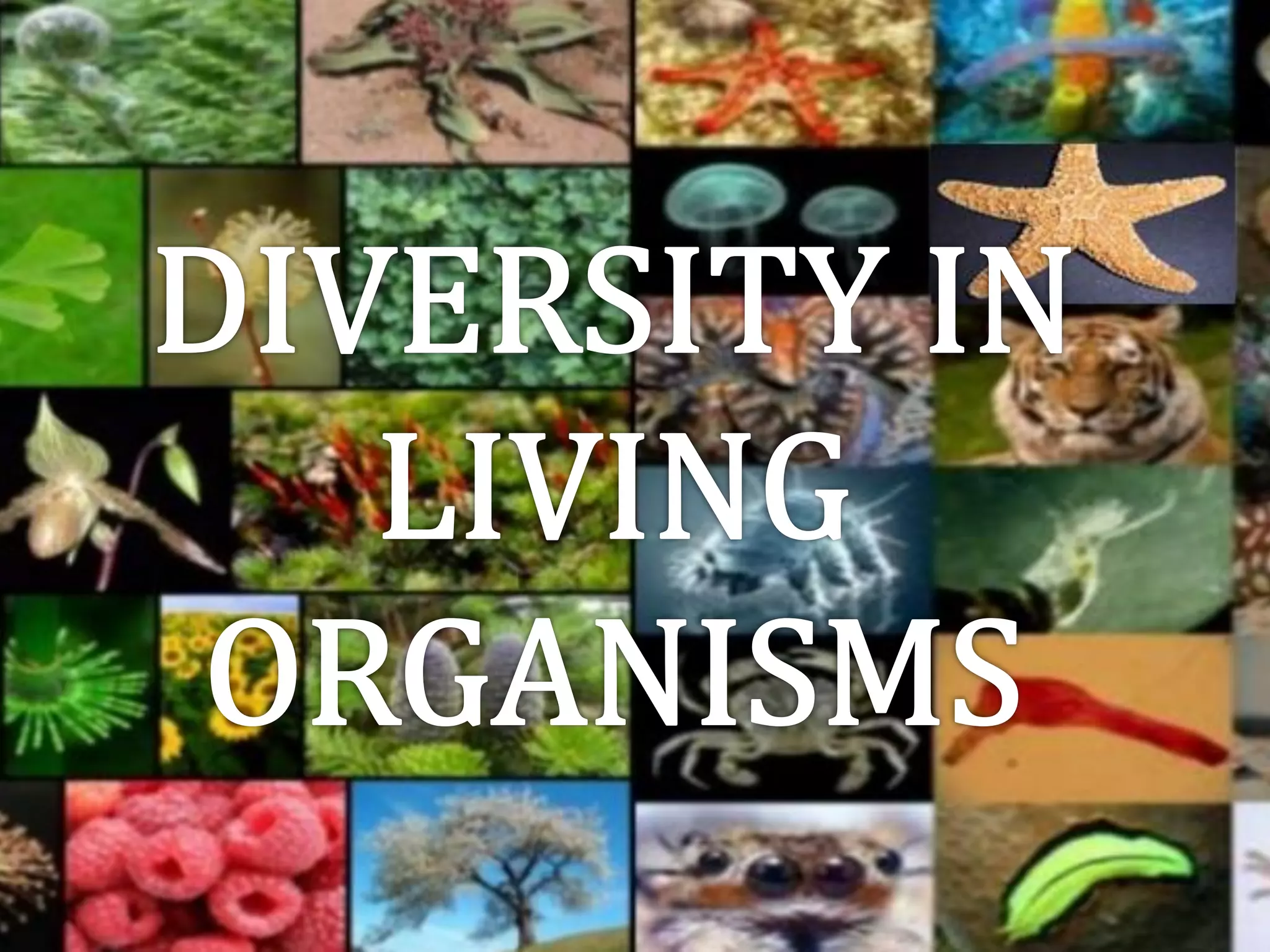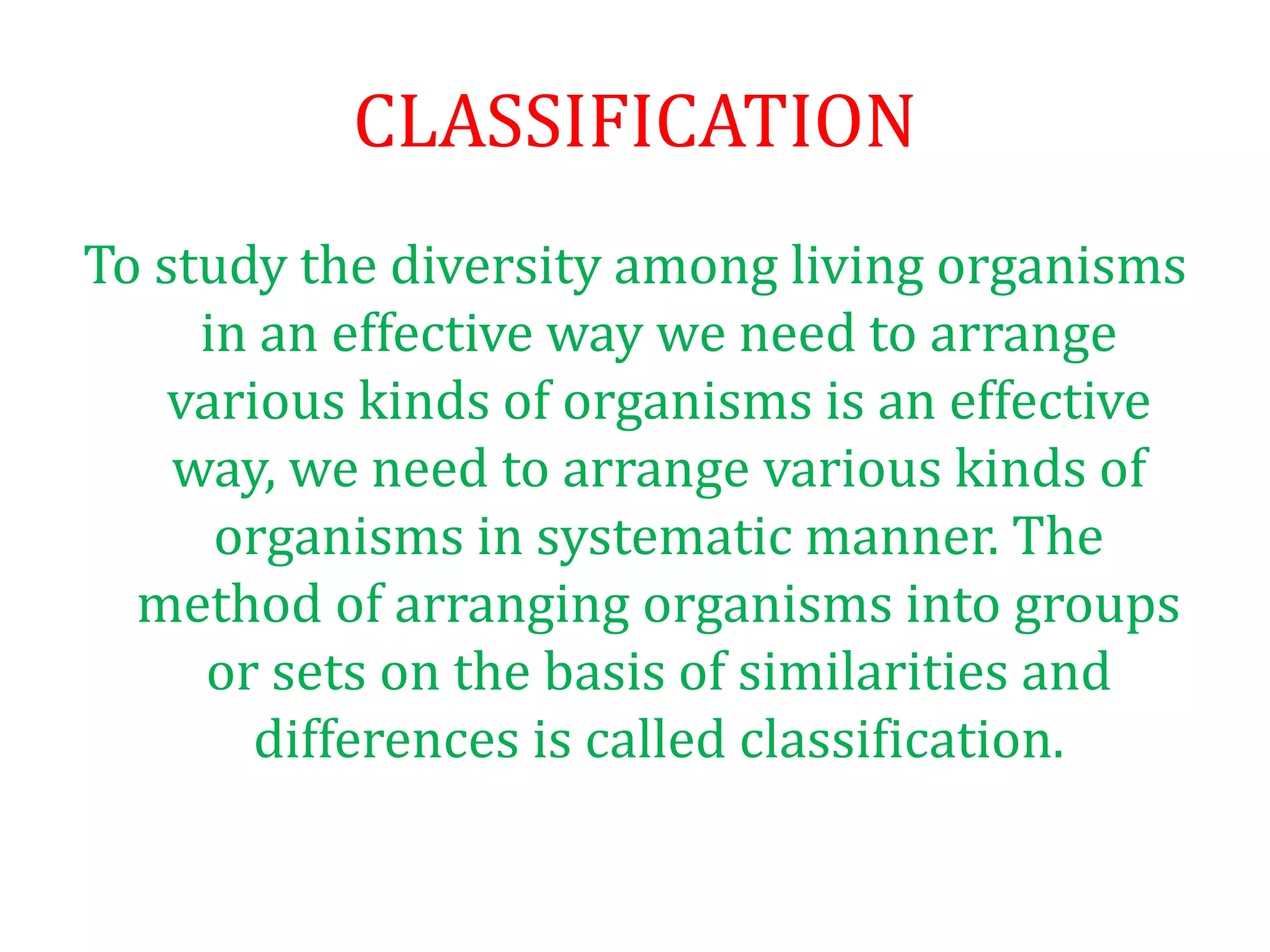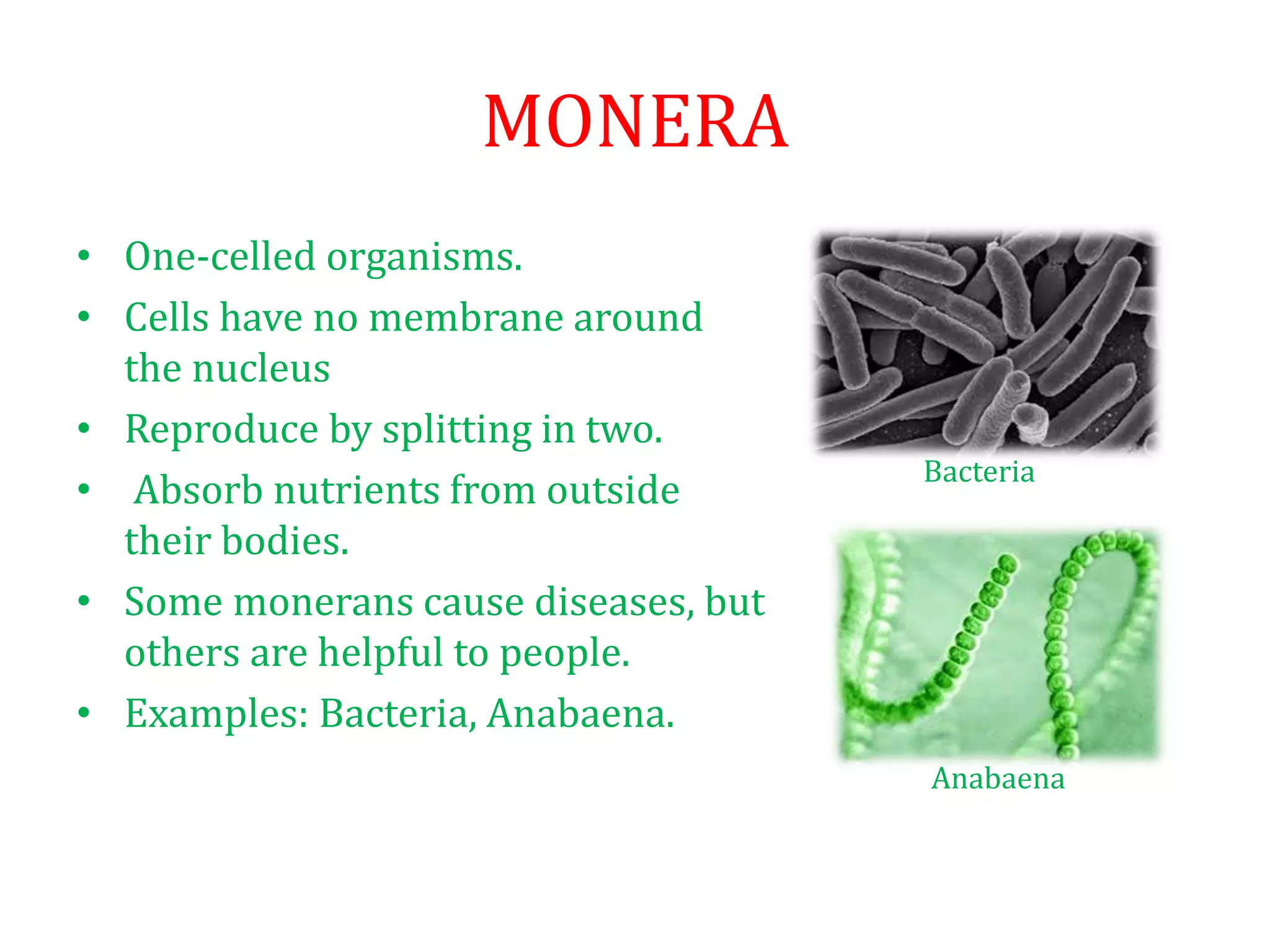The document discusses biodiversity and taxonomy, emphasizing the unique characteristics of organisms and the need for a uniform naming system, known as binomial nomenclature, to classify living beings. It outlines the five kingdoms of life (Monera, Protista, Fungi, Plantae, and Animalia) and details the classification hierarchy from kingdom down to species, including the characteristics of various phyla within these kingdoms. The evolution of organisms is also linked to their classification, highlighting the importance of systematic categorization in studying biological diversity.



























































